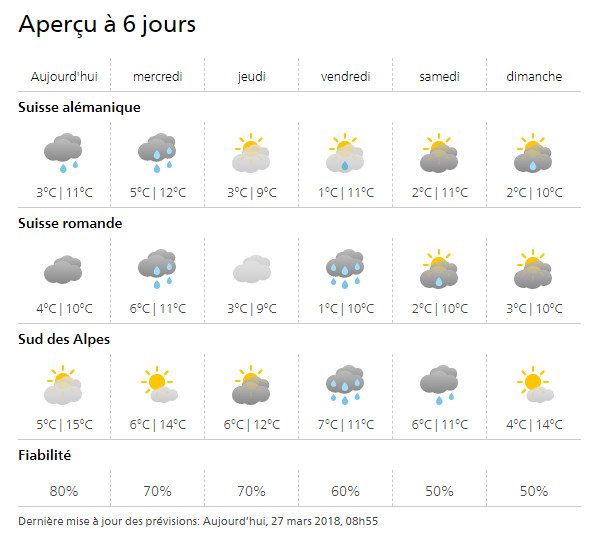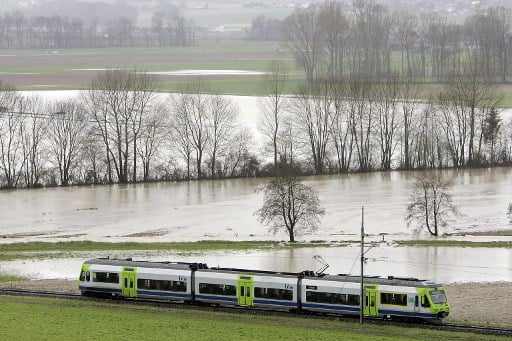
WEATHER
Switzerland at risk of potentially ‘devastating’ floods this spring
The amount of snow in the mountains this winter and rainfall on the lowlands could have serious consequences for lakes and rivers in Switzerland this spring, one expert has warned.
Published: 27 March 2018 09:27 CEST

Flooding in Switzerland in 2006. Photo: Fabrice Coffrini/AFP
“Devastating flooding” is a possibility, canton Bern’s head of property insurance Ueli Winzenried told the media, saying he was extremely concerned by the situation.
Cantons should take steps to lower the level of lakes so they can absorb the coming meltwater, he advised, while owners of property in risk areas should empty their cellars and arm themselves with sandbags.
The aim is to avoid a repeat of the situation in 1999, when heavy rain after a snowy winter caused lakes and rivers to break their banks, creating millions of francs of damage.
However it is still too early to know if Switzerland will face the same risks of flooding as back then.
“We are not, for the moment, in the same situation as in 1999,” Philippe Hohl, head of the water division in canton Vaud’s environment department, told 20 Minutes.
In 1999 there was more snow in the mountains and the month of May was extremely rainy, a combination that led to the flooding.
“For the moment we are quite far from that situation, but things can change very quickly in a catastrophic way,” he said.
Places particularly at risk include the Lake Neuchâtel area, which faced flooding in 2015 after Lake Biel, which feeds into it, swelled with meltwater, and the Rhône valley in the canton of Valais, where residents still remember the catastrophe of autumn 2000 when the river broke its banks and caused vast flooding.
Rain is forecast this week on the Swiss lowlands, turning to snow in the mountains.

Source: MeteoSuisse
Url copied to clipboard!



 Please whitelist us to continue reading.
Please whitelist us to continue reading.